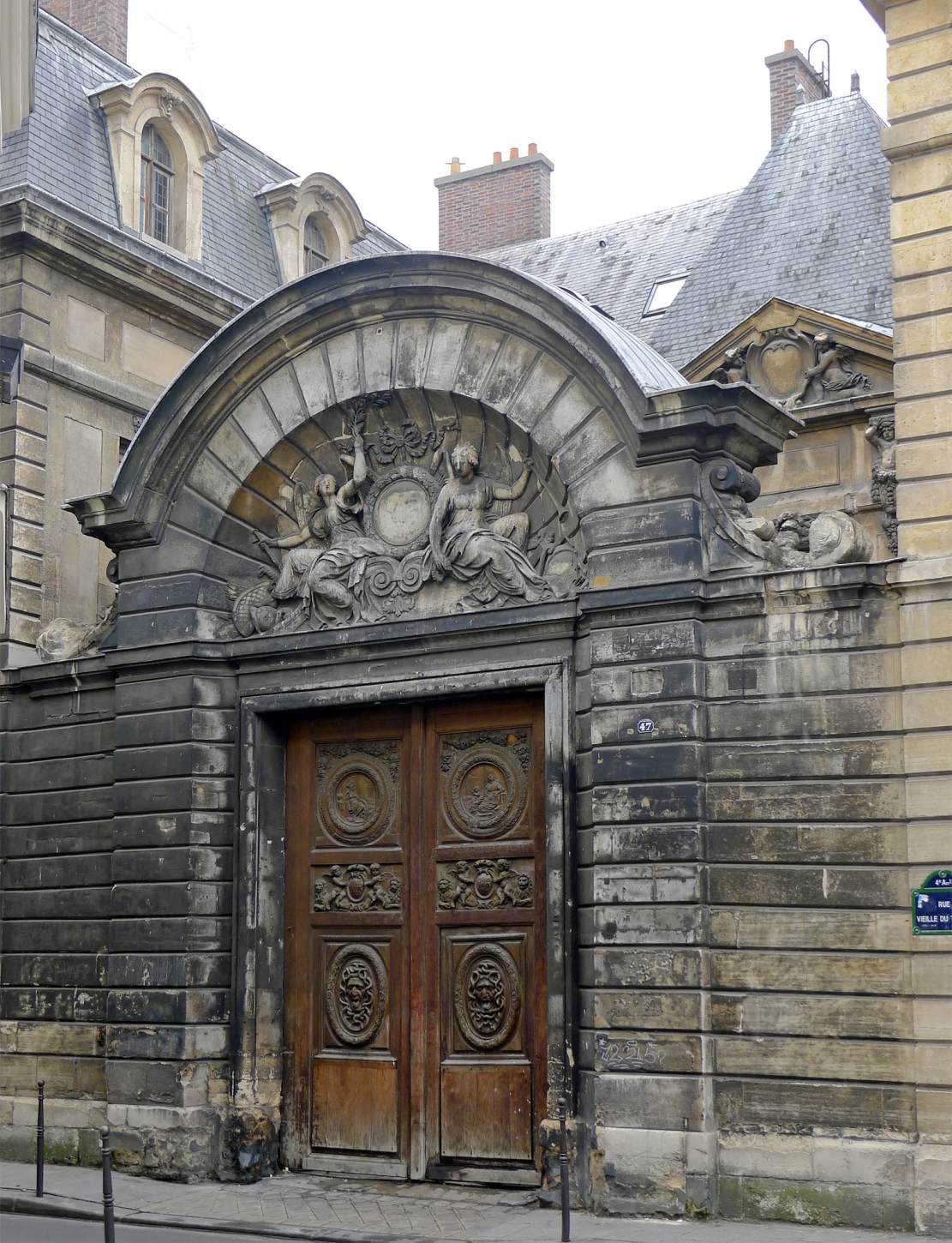French architect and engraver. Although his name appears in the accounts of the king's works between 1670 and 1674, and he received a royal pension from 1697, his career is relatively obscure. His first engravings date from 1649, and his Recueil de plusieurs pieces d'architecture, consisting of 12 plates and dedicated to Charles de Rostaing, was reprinted in 1660. It included the chapel of the Fathers of Mercy (destroyed) in the Rue des Archives, for which Cottart had proposed an elevation incorporating in the lower part the ground floor erected by Charles Chamois. Germain Boffrand completed the building 40 years later.
Cottart's major work, however, which was the subject of nine engravings and which still survives, is the mansion of the Maître des Requêtes, Amelot de Bisseuil, at 47 Rue Vieille-du-Temple, Paris, now known as the Hôtel des Ambassadeurs de Hollande. Here, between 1657 and 1660, Cottart restored some old buildings on very restricted sites, transforming them into fashionable residences comprising two courtyards linked by a carriage arch beneath the centre of the main block. Perspective effects and skilful planning were combined to create the illusion of more extensive space. In 1665 Cottart worked on the completion of the town hall at Troyes (begun 1624), building the first floor and decorating it with black marble columns. The Château de Villacerf, near Troyes, which he built for Edouard Colbert in 1675, is known only from eight engravings. Preceded by a vast forecourt, it rose among wide moats filled from the Seine. A large, square drawing-room occupied the centre of the single main block, which terminated in twin pavilions.
Cottart also supplied drawings (1665) for the east façade of the Louvre as well as designs for a grand staircase (five plates) and other designs for 'a German prince'. He had a special interest in interior decoration and left three collections of engravings on this subject, including the Recueil de plusieurs morceaux d'ornements. An edition of his collected works, engraved by him in 1686, confirms the superiority of his draughtsmanship over his skill as a builder. He remained faithful to the style of the 1660s, as represented by Louis Le Vau and François Le Vau: a style with a taste for the monumental and for sculptural ornament, high pitched roofs, very wide bays and, in the interior decoration, Italianate rooms, heavy, rich mouldings and an architectural treatment of the wall surface.
//
![]()




